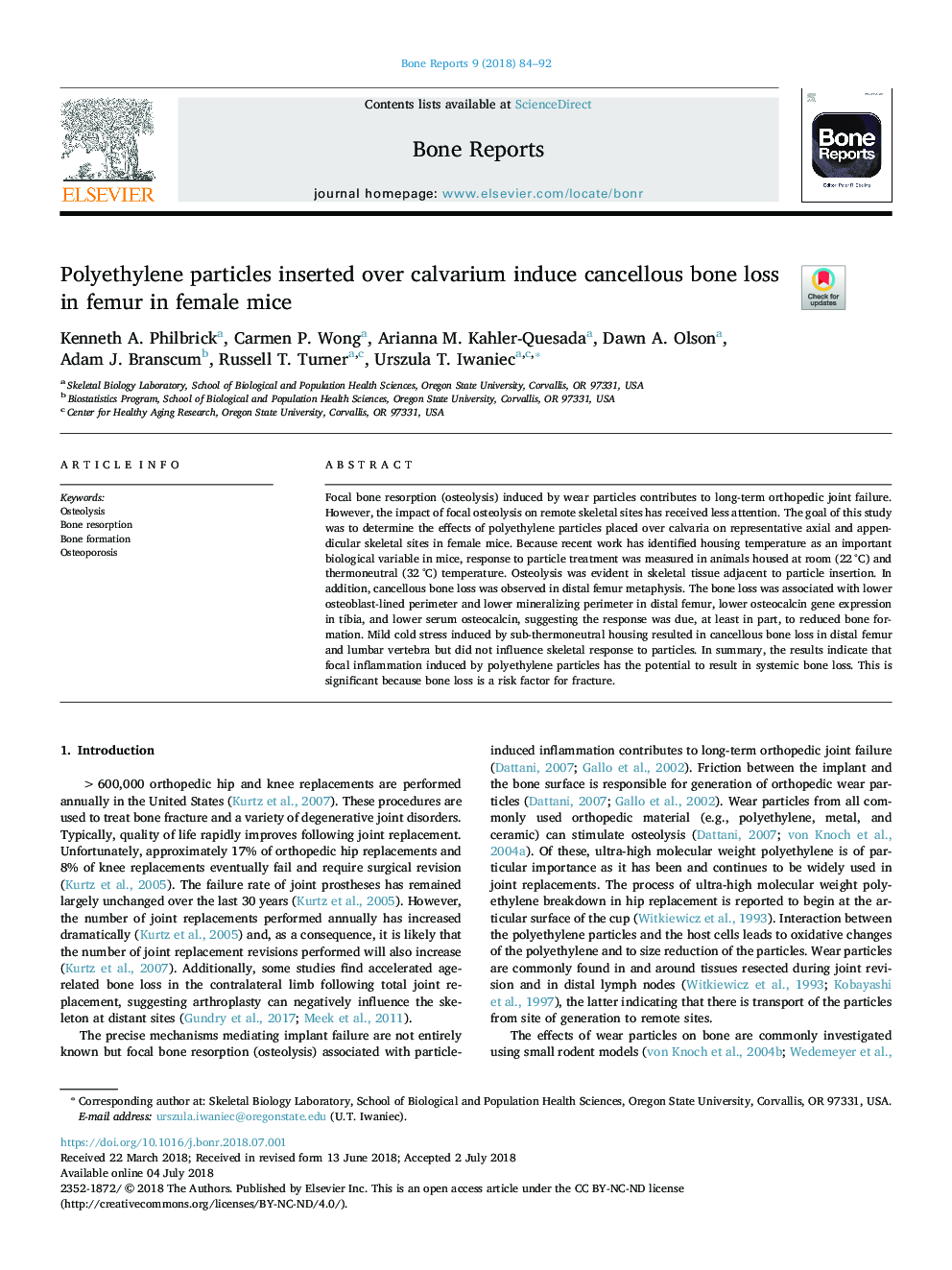| Article ID | Journal | Published Year | Pages | File Type |
|---|---|---|---|---|
| 8627518 | Bone Reports | 2018 | 9 Pages |
Abstract
Focal bone resorption (osteolysis) induced by wear particles contributes to long-term orthopedic joint failure. However, the impact of focal osteolysis on remote skeletal sites has received less attention. The goal of this study was to determine the effects of polyethylene particles placed over calvaria on representative axial and appendicular skeletal sites in female mice. Because recent work has identified housing temperature as an important biological variable in mice, response to particle treatment was measured in animals housed at room (22â¯Â°C) and thermoneutral (32â¯Â°C) temperature. Osteolysis was evident in skeletal tissue adjacent to particle insertion. In addition, cancellous bone loss was observed in distal femur metaphysis. The bone loss was associated with lower osteoblast-lined perimeter and lower mineralizing perimeter in distal femur, lower osteocalcin gene expression in tibia, and lower serum osteocalcin, suggesting the response was due, at least in part, to reduced bone formation. Mild cold stress induced by sub-thermoneutral housing resulted in cancellous bone loss in distal femur and lumbar vertebra but did not influence skeletal response to particles. In summary, the results indicate that focal inflammation induced by polyethylene particles has the potential to result in systemic bone loss. This is significant because bone loss is a risk factor for fracture.
Related Topics
Life Sciences
Biochemistry, Genetics and Molecular Biology
Endocrinology
Authors
Kenneth A. Philbrick, Carmen P. Wong, Arianna M. Kahler-Quesada, Dawn A. Olson, Adam J. Branscum, Russell T. Turner, Urszula T. Iwaniec,
